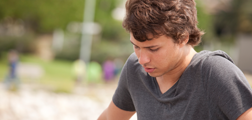Effects

Children who have been sexually abused may display a range of emotional and behavioral reactions, many of which are characteristic of children who have experienced other types of trauma.
Child sexual abuse is any interaction between a child and an adult (or another child) in which the child is used for the sexual stimulation of the perpetrator or an observer. Sexual abuse can include both touching and non-touching behaviors. Non-touching behaviors can include voyeurism (trying to look at a child’s naked body), exhibitionism, or exposing the child to pornography. Children of all ages, races, ethnicities, and economic backgrounds may experience sexual abuse. Child sexual abuse affects both girls and boys in all kinds of neighborhoods and communities.

Children who have been sexually abused may display a range of emotional and behavioral reactions, many of which are characteristic of children who have experienced other types of trauma.

The following treatments have been shown to be effective in improving trauma-specific outcomes for children and/or teens after sexual abuse or assault.

The following resources on Sexual Abuse were developed by external partners and organizations.